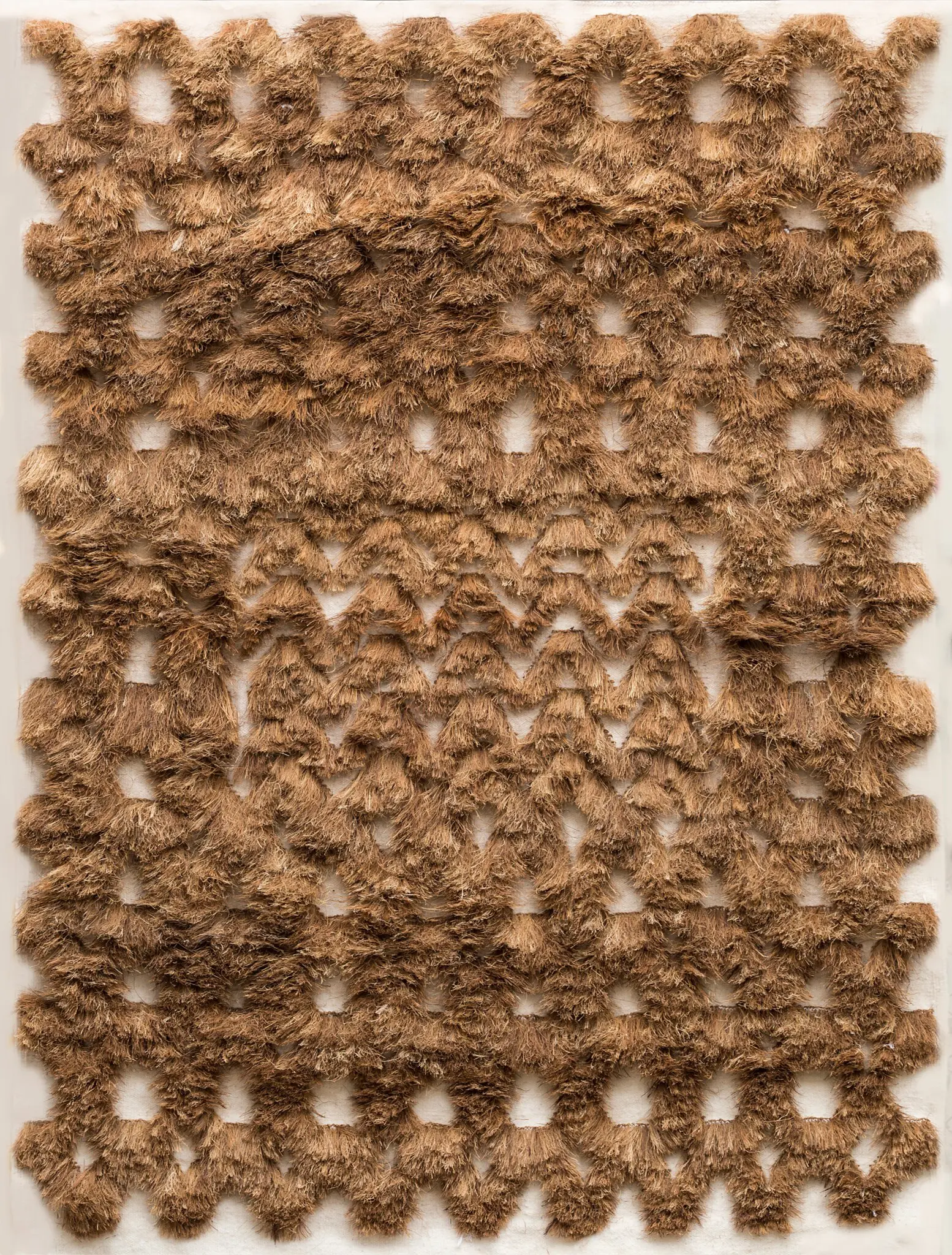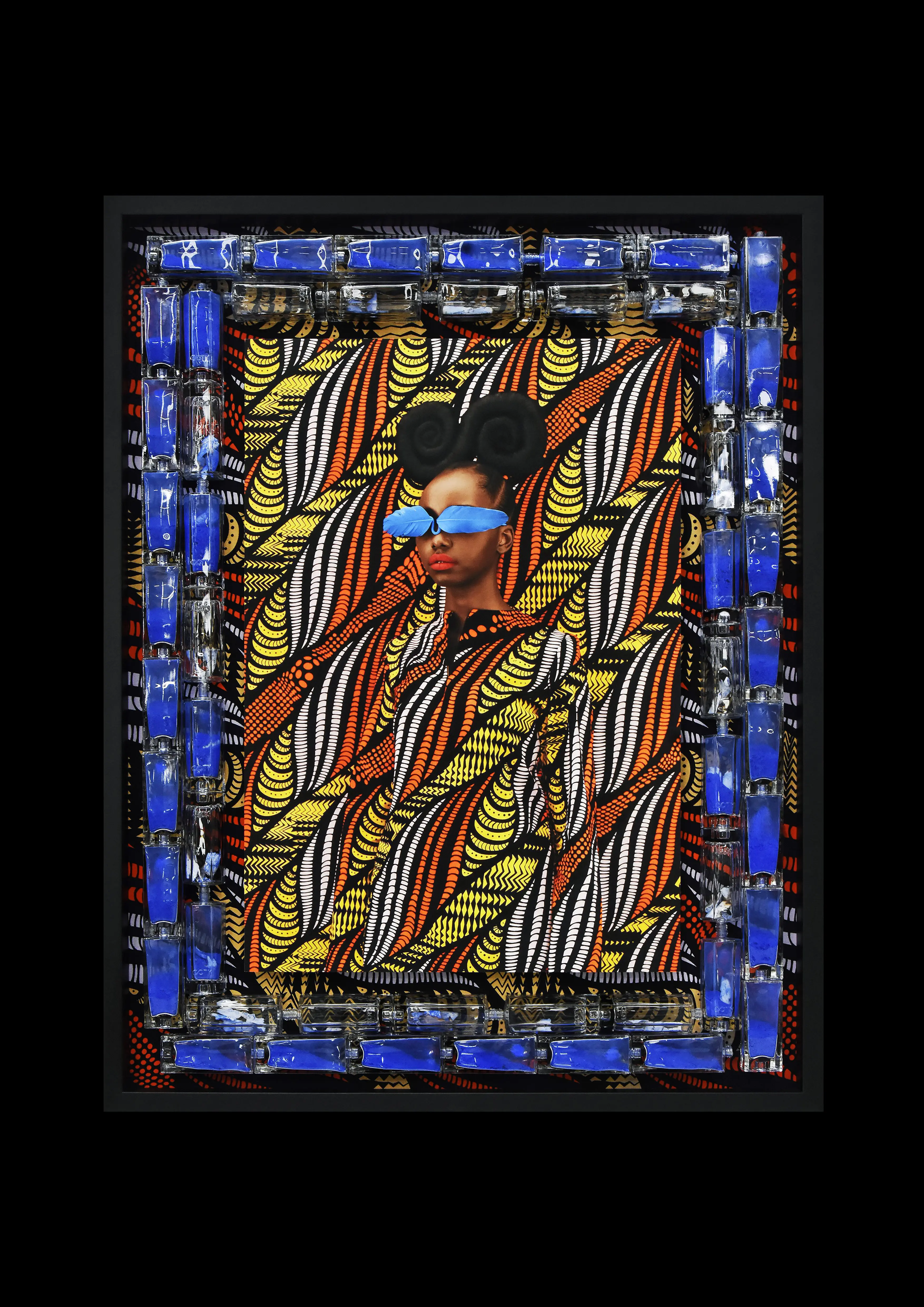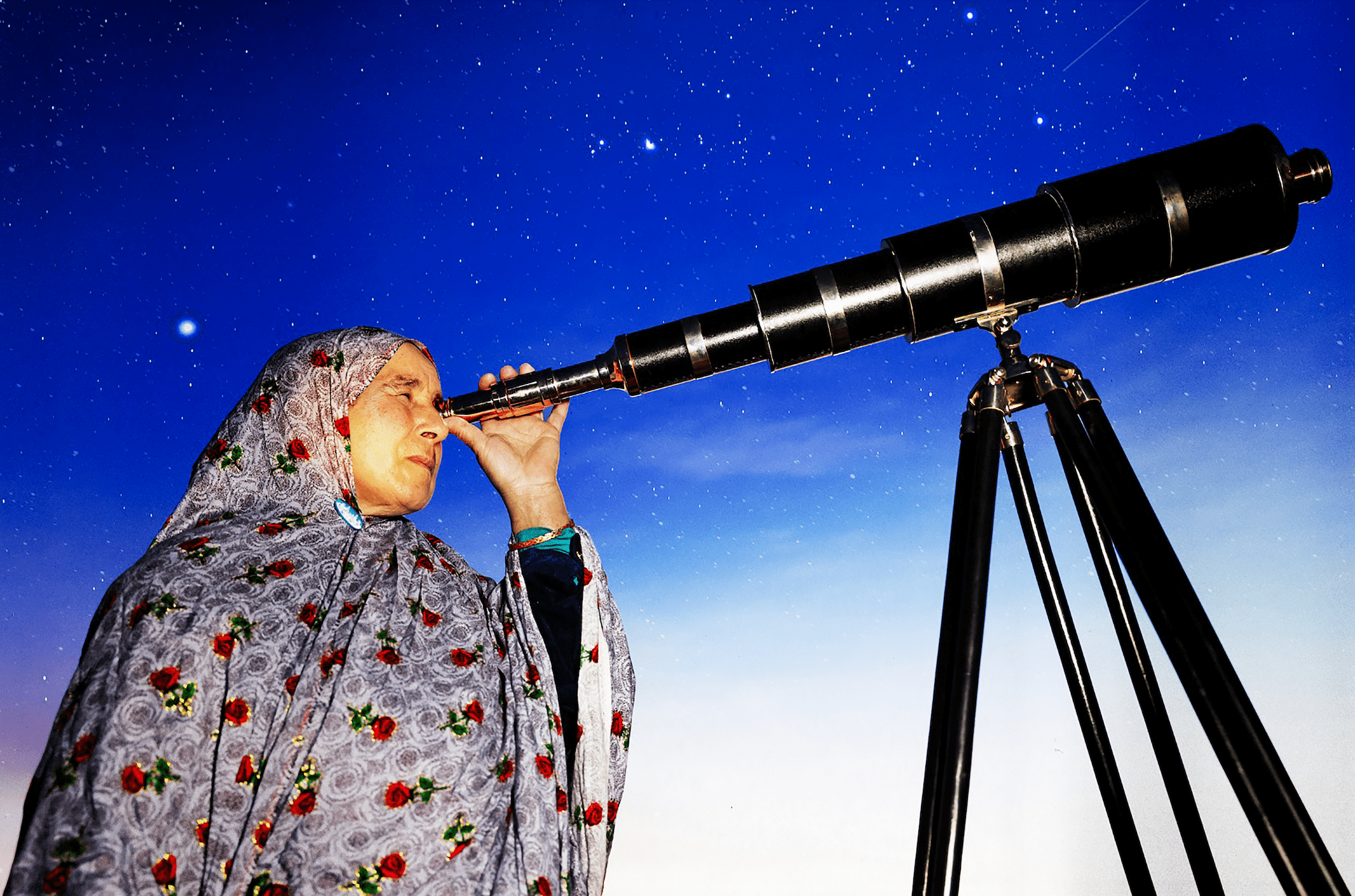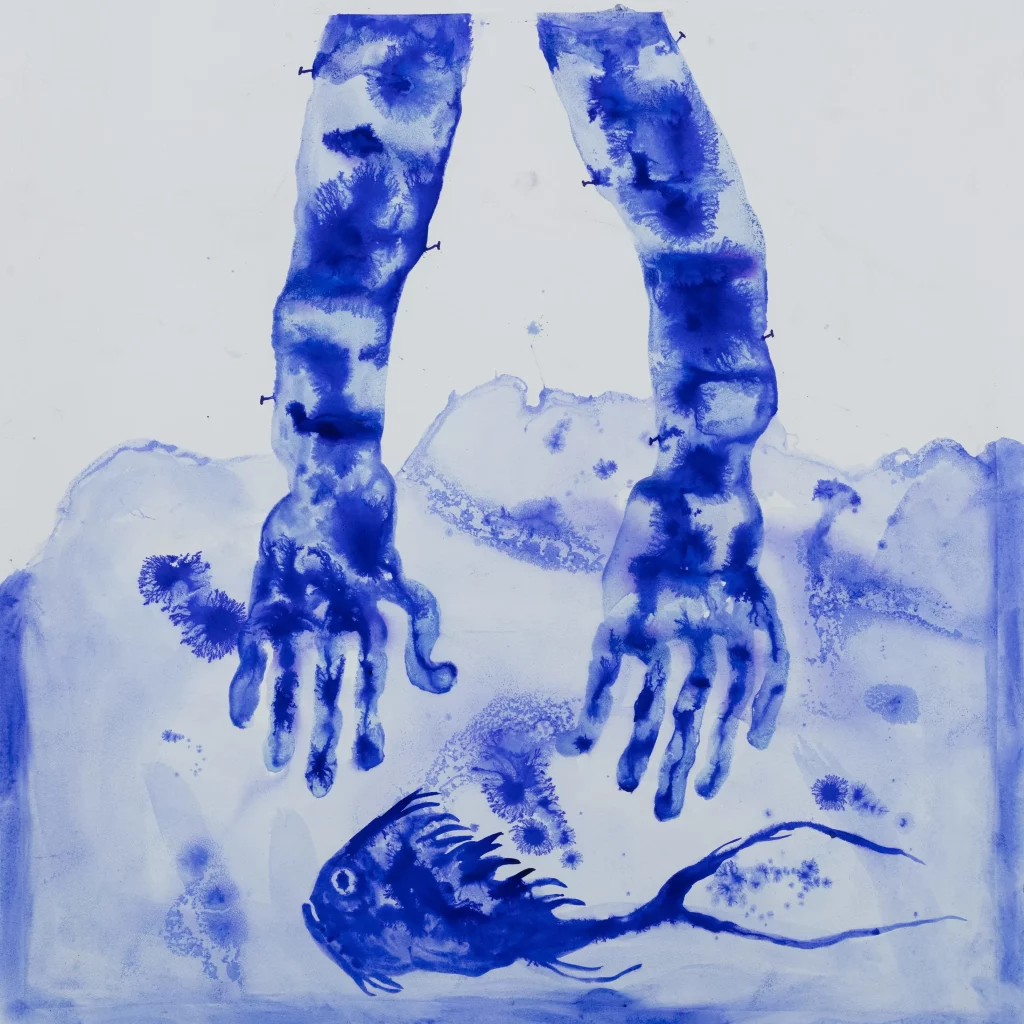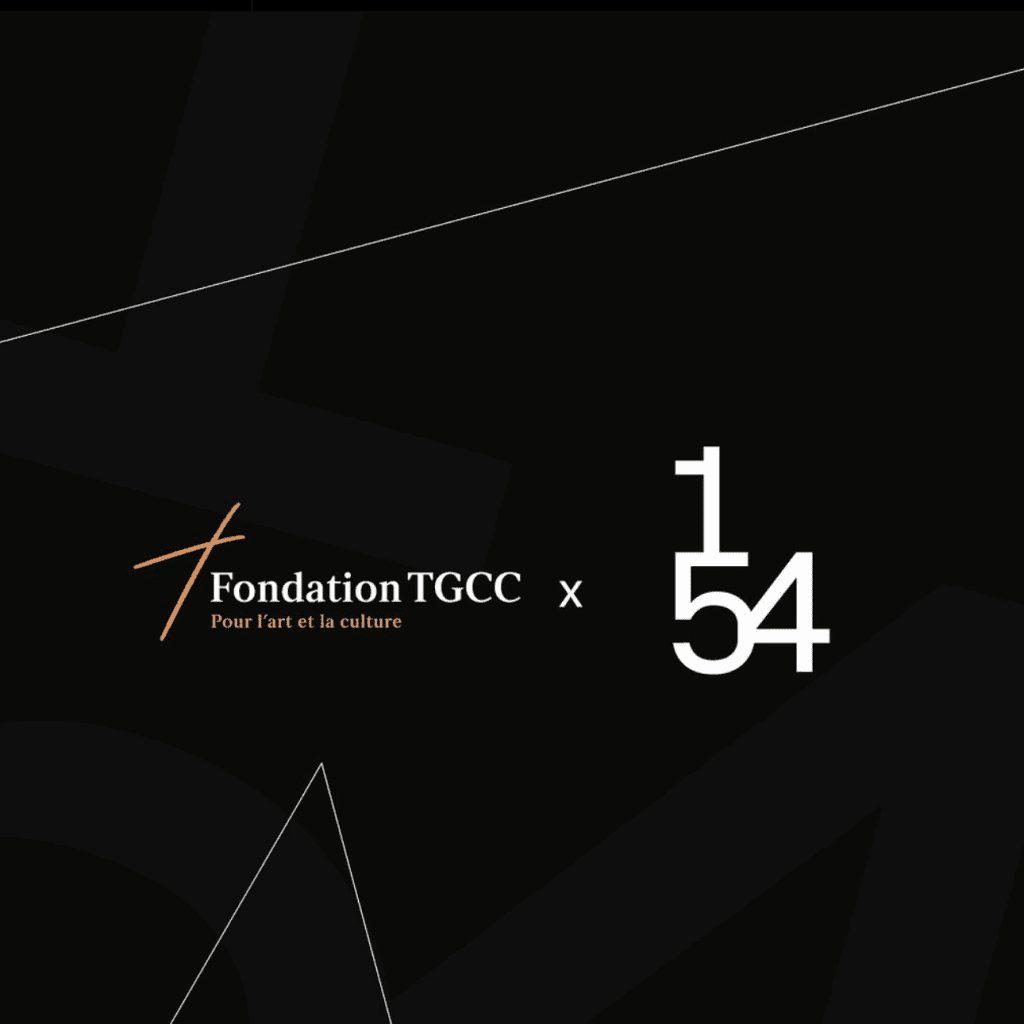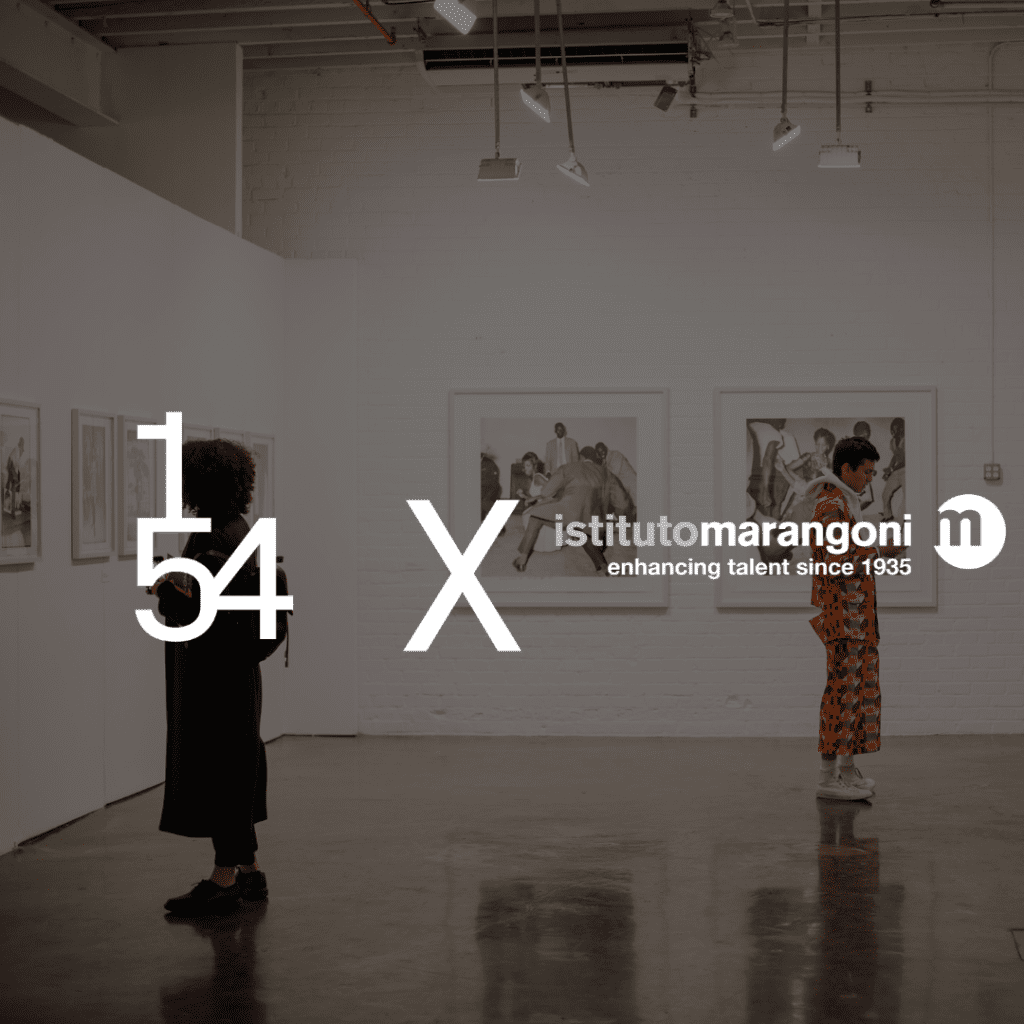PORTALS
Text by Kristi Ann Jones, Loft Art Gallery
Draw me a door.
Yes, you can touch it. Feel the imperfection, the irregular edges of the wool and the palm.
This is a door to somewhere, somewhere off the map where everyday objects are still made by hand, and everyday gestures remained unchanged over decades, centuries.
Amina Agueznay mixes architecture, textile, and natural elements to imagine pieces of local landscape. At the origin of this Portals series was an invitation from architect/anthropologist Salima Naji[1] to a ksar village in southern Morocco, the site of her eco-rehabilitation project using sustainable methodology.
Amina Agueznay accepted the invitation to involve local women maalmates (weavers) in the method and process, as part of Naji’s broader project of heritage restoration and the empowerment of local populations. Agueznay asked the craftswomen to observe their environment, drawing details as they saw them. One of the primary architectural elements of the ksar are its doors; the women drew the doors, then wove their sketches into wool, each one unique.
To create the Portals series, Agueznay revisited Tiskmoudine. She drew her own doors, in life-size scale, and sourced local materials that evoke the natural environment as well as the architectural heritage of the fortified village. Just as Salima Naji uses adobe and local stone in her eco-restoration, the artist chose undyed natural wool and palm husk (talefdamt) to weave her portals, establishing the bridge between craft and architecture.
Five portals and sixteen detail works recreate the architecture of the ksar within the walls of Somerset House: the path to the oasis, the texture of shaved palm husk worn brown by the sun, the rough-spun undyed wool. The geometry of these structures gives way to the unpredictability of the loom, the individual hand and natural material. Here is the uncommon value of imperfection.
This is what is feels like.
The resulting works are full of color, the color of that place. They come to life in another back-and-forth process that is a combination of sensory responses. The brush-like texture of the talefdamt husk strikes against the familiar soft surface of wool. Yes, you can touch it. And see it, and smell it. The palm grove lingers in the organic smell of the husk, and the untreated wool. This synesthetic response evokes the colors of the oasis and the walls of the ksar, the heat of the sun, even the blue of the sky.
